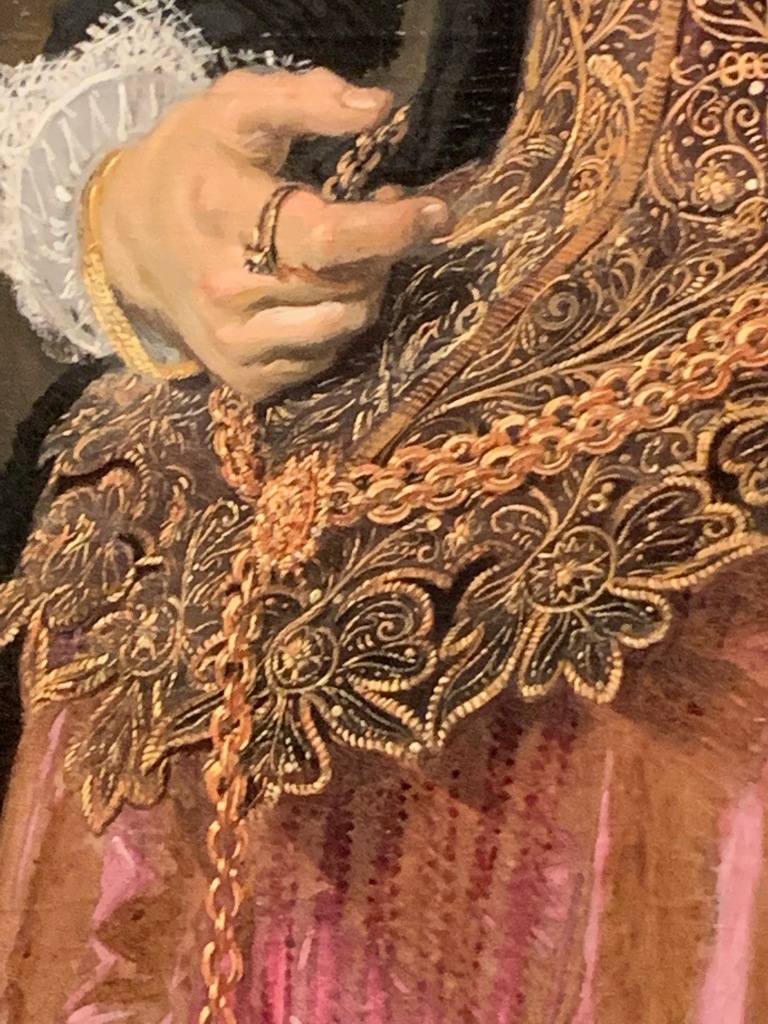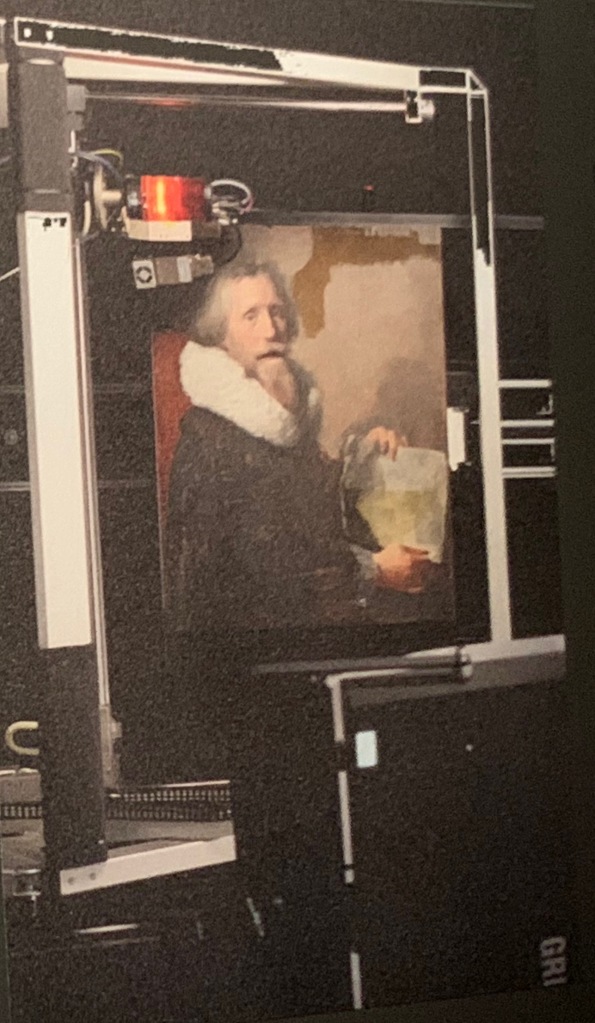I don’t know about you , but when I go to a Museum I always wonder how all these paintings by the old masters look so clean and crisp, like they were painted yesterday.


Over the Christmas Holidays I was privileged to be in Amsterdam the Netherlands at the Mauritshuhis Museum where they had an exhibition called Facelifts & Makeovers. These exhibition shined a light on what always remains hidden.
Paintings are usually restored in studios where the public doesn’t have any access to them, but this exhibition showed some of the hidden process, techniques and technology the museum has to work with.
Today conservators all over the world use the latest techniques and researched methods to keep paintings looking like new. I can’t even imagine what could have had happened if we let these beautiful paintings to be ravaged by time?
In the painting below you can observe how the painting looked before and after the restoration.

At the bottom picture you can see the whole restored painting.

Centuries old paintings by Rembrandt, Vemmer, Rubens to name a few are well preserved for generations thanks to the work of the conservation team at the Mauritshuis Museum and other museums alike.


The Maurithuis museum has an in house conservation studio located in the attic of the historic museum building. The conservators not only look after the painting collections but also are involved in researching the materials and techniques used by the old Masters. In this exhibition conservators at the Museum shared their discoveries, techniques and cleaning process to the public. Until 1950, paintings hung in rooms that were heated with coal-fired stoves in the winter. Paintings looked different from the way they do now. They looked darker because of poor lighting, yellowed varnish and the soot from the stoves.


Every painting is different, therefore so are the restoration treatments. After the preliminary examination the research team devises a plan for the restoration. The most common steps are:
1.- Removing dirt from the painting’s surface. Over the course of time, dust and dirt can form a haze over the painting.
2.- Varnish removal. The protective layer (varnish) can discolor and turn yellowish. By removing the old varnish the original colors are exposed.
3.- Old “retouching” from earlier restoration and other additions are removed.
4.- Filling and retouching.

Conservators at the Maurithuis Museum also have great tools and techniques at their disposal.
Microscopy is one of those techniques. The microscope is an important tool when studying a painting. It is used to examine the materials, conditions and the original technique used by the masters. The microscope can reveal the details of the brushstrokes and also any old damage and restorations. Also by pointing the light source at an angle the microscope can make the texture visible.

Another technique is X-Radiography. This technique can show changes made during the painting process visible. It can also show pigments containing heavy metals like lead and mercury. These pigments appear white in the x-ray image. It provides information about the support and how the canvas was woven.

Infrared Reflectography is used to look beneath the painting’s visible surface. It is also used to detect an under-drawing or sketch. It also shows which pigments were used and the changes the artist made while painting. This helps to discover earlier restoration.

X-Ray fluorescence allows the conservator to identify the pigments that were used. This technique can also reveal underlying changes to show details in the painting that are no longer visible to the naked eye.

Ultraviolet (UV) radiation is used to distinguish between original paint and later additions that were applied during earlier restorations. This so called “retouching ” is often darker than the original paint. It also helps with identifying pigments and if the remains of all varnish has been removed.

One of the highlights in the exhibition was Rembrandt’s Susanna. The panel had been attacked by woodworm during the eighteenth century. A piece was added to the right side of the painting sometime in the same century. A research undertaken by Petria Noble revealed that this added strip was not original. Based on the result of the research, the Museum decided to choose a new frame that covered the top corners of the panel.


The painting above is around five hundred years old. The Museum does not know who painted it but was able to date it because caps like the man is wearing in the painting where popular between 1515 and 1530. The restoration of this portrait was no easy task. The background had been completely repainted. This was done to old portraits quite frequently to mask discoloration or damage. Based on the type of paint that was used, The Mauritshuin Museum knew that the layer was added before 1750. Corservator AAbbie Vandiverse also found old layers of varnish and later additions that were difficult to remove. Eventually she was able to reveal the original green paint of the background with a special gel.
Thanks to the work of conservators at the Maurithuis Museums we can see the paintings as intended by the artist.
Next time you go into a Museum you can have a better idea on what remains hidden to us. If you are a lover of art, I hope you enjoyed this piece as much as I did writing it for you.
Until next time,
Make something beautiful,
xoxo
Rosalia

